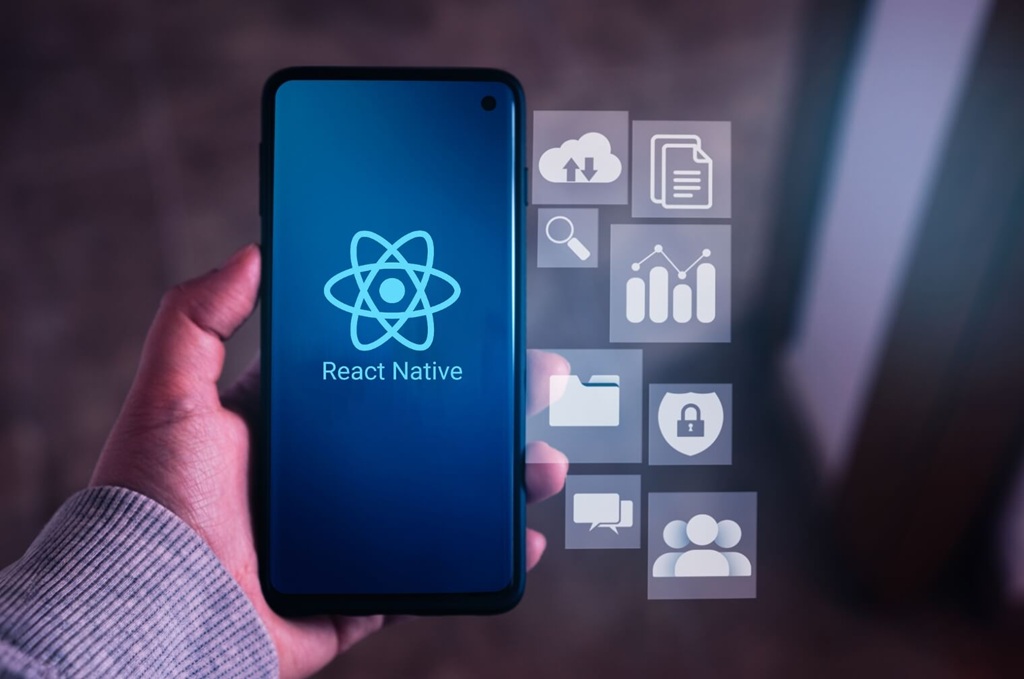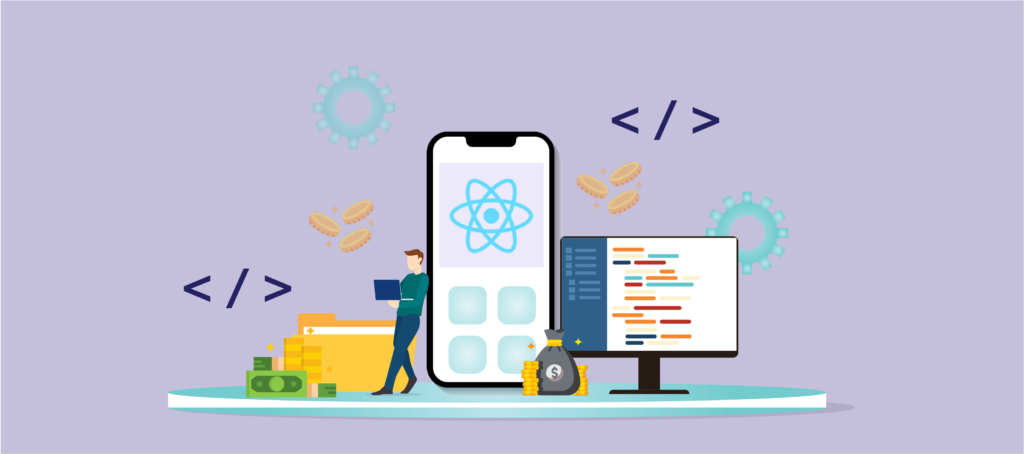
Unveiling the True Cost of React Native App Development: A Comprehensive Guide
In the dynamic landscape of mobile app development, React Native has emerged as a formidable contender, offering the promise of cross-platform efficiency and cost-effectiveness. However, the question of “how much will it actually cost?” remains a pivotal concern for businesses and entrepreneurs alike. Pinpointing the exact cost of a React Native application is a nuanced endeavor, influenced by a myriad of factors. This comprehensive guide aims to demystify the process, dissecting the key elements that contribute to the overall expenditure and providing a realistic outlook on budgeting for your project.
Understanding the Core Advantages of React Native:
Before diving into the financial intricacies, it’s crucial to acknowledge the inherent benefits that make React Native a compelling choice. Built on JavaScript and leveraging the power of React, it allows developers to write code once and deploy it across both iOS and Android platforms. This “write once, run anywhere” philosophy translates to reduced development time and, consequently, lower costs compared to native app development. Moreover, React Native boasts a vibrant community, a rich ecosystem of libraries, and seamless integration with native modules, further enhancing its appeal.
Dissecting the Cost Drivers: A Multifaceted Approach:
The cost of React Native app development is not a fixed figure. It’s a dynamic variable, shaped by a confluence of factors that warrant meticulous consideration.
-
Project Complexity and Features:
The complexity of your app’s features is arguably the most significant cost determinant. A simple app with basic functionalities, such as a content viewer or a task list, will naturally be more economical than a feature-rich application with intricate functionalities like real-time communication, advanced animations, or complex data visualizations.
- Simple Apps: These typically involve static content, basic user interactions, and straightforward data handling. Costs can range from $10,000 to $30,000.
- Medium Complexity Apps: These incorporate more advanced features, such as user authentication, in-app purchases, and integration with third-party APIs. Costs can range from $30,000 to $60,000.
- Complex Apps: These feature sophisticated functionalities, including real-time data streaming, AR/VR integration, and complex backend systems. Costs can easily exceed $60,000 and can reach hundreds of thousands of dollars.
-
Design and User Experience (UX/UI):
A visually appealing and intuitive user interface is paramount for app success. Investing in a professional UX/UI design ensures a seamless user experience, which can significantly impact user engagement and retention.
- Basic Design: Employing standard UI components and templates can reduce design costs.
- Custom Design: Tailoring the design to your brand identity and user preferences requires more effort, resulting in higher costs.
- Animations and Interactions: Incorporating intricate animations and interactions adds to the design complexity and, consequently, the cost.
-
Backend Development and Infrastructure:
Many apps require a robust backend infrastructure to manage data, handle user authentication, and facilitate server-side logic. The complexity of the backend system directly influences the development cost.
- Simple Backend: For basic data storage and retrieval, a simple backend solution may suffice.
- Complex Backend: Apps with real-time data processing, complex algorithms, and robust security measures necessitate a more sophisticated backend infrastructure.
- Cloud Hosting: Cloud services like AWS, Google Cloud, and Azure offer scalability and reliability but come with associated costs.
-
Development Team and Location:
The expertise and location of your development team significantly impact the overall cost.
- Freelancers: Hiring freelancers can offer cost savings, but it requires careful vetting and project management.
- Agencies: Development agencies provide a structured approach and a team of experts, but their rates are typically higher.
- Geographic Location: Development rates vary significantly across different regions. Developers in North America and Western Europe generally charge higher rates than those in Eastern Europe or Southeast Asia.
-
Testing and Quality Assurance (QA):
Thorough testing is crucial to ensure app stability and performance. Comprehensive QA processes involve functional testing, performance testing, usability testing, and security testing.
- Manual Testing: Manually testing the app across different devices and operating systems is time-consuming but essential.
- Automated Testing: Implementing automated testing frameworks can streamline the testing process and improve efficiency.
- Regression Testing: Regularly testing the app after updates or changes is crucial to prevent regressions.
-
App Maintenance and Updates:
App development is an ongoing process. Regular maintenance, updates, and bug fixes are essential to ensure long-term app performance and user satisfaction.
- Bug Fixes: Addressing bugs and issues that arise after launch is a necessary part of app maintenance.
- Feature Updates: Adding new features and functionalities to enhance the app’s value requires ongoing development efforts.
- Security Updates: Regularly updating the app to address security vulnerabilities is crucial for protecting user data.
Related: The Essential Components of a Successful Business Plan for Your App
Estimating the Cost: A Practical Approach:
While providing an exact cost is challenging, a practical approach involves breaking down the project into phases and estimating the cost for each phase.
- Discovery and Planning: Defining the app’s scope, features, and target audience.
- UX/UI Design: Creating wireframes, mockups, and prototypes.
- Development: Writing the code and implementing the features.
- Testing and QA: Ensuring app stability and performance.
- Deployment and Launch: Publishing the app on app stores.
- Maintenance and Support: Providing ongoing support and updates.
People Also Ask (FAQs):
Q: Is React Native cheaper than native development?
A: Yes, generally. React Native can be more cost-effective due to its cross-platform capabilities, reducing development time and effort. However, the exact cost difference depends on the project’s complexity and specific requirements.
Q: How long does it take to develop a React Native app?
A: The development time varies significantly based on the app’s complexity. A simple app might take a few weeks, while a complex app could take several months.
Related: How do I stop apps from drawing over other apps?
Q: Can I use React Native for complex apps?
A: Yes, React Native is capable of handling complex apps. However, for highly performance-intensive apps or those requiring specific native functionalities, native development might be more suitable.
Q: What are the key factors that affect React Native development cost?
A: The key factors include project complexity, design, backend development, team location, testing, and maintenance.
Q: How can I reduce the cost of React Native app development?
A: You can reduce costs by carefully planning your project, prioritizing features, using pre-built components, and choosing a cost-effective development team.
Q: What is the average hourly rate for React Native developers?
A: Hourly rates vary based on location and experience. They can range from $20 to $150 per hour.
Q: What is the difference between React Native and Flutter?
A: Both are cross-platform frameworks. React Native uses JavaScript, while Flutter uses Dart. The choice depends on project requirements and team expertise.
Q: How to find a good React Native developer?
A: Look for developers with a strong portfolio, relevant experience, and positive reviews. Consider their communication skills and ability to understand your project requirements.
Q: What is the cost of maintaining a React Native app?
A: Maintenance costs depend on the app’s complexity and usage. Typically, it ranges from 15% to 20% of the initial development cost per year.
Q: Can I build an e-commerce app with React Native?
A: Yes, React Native is suitable for building e-commerce apps with features like product catalogs, shopping carts, and payment gateways.
Conclusion:
The cost of React Native app development is a multifaceted equation, influenced by a plethora of variables. By understanding these factors and adopting a strategic approach, businesses can effectively budget for their projects and maximize their return on investment. While React Native offers significant cost advantages through cross-platform development, careful planning, and meticulous execution are essential for achieving optimal results. Remember that investing in quality design, robust backend infrastructure, and thorough testing will ultimately contribute to a successful and user-friendly application. Embrace the power of React Native, and embark on a journey towards creating a compelling mobile experience that resonates with your target audience.




Average Rating